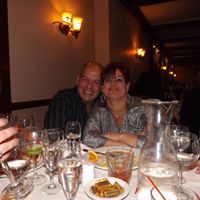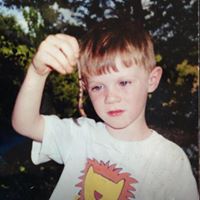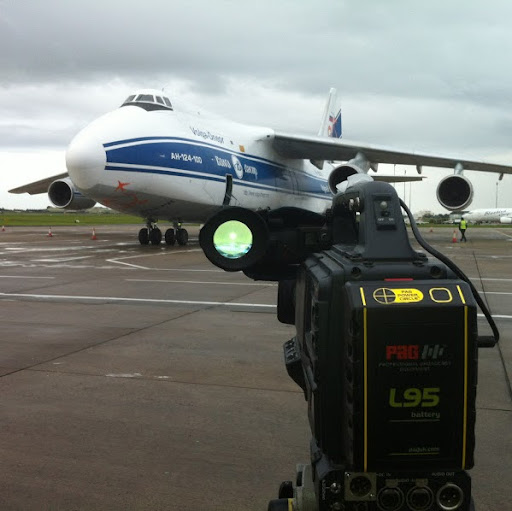David L Goldsmith
age ~51
from Riverview, FL
David Goldsmith Phones & Addresses
- Riverview, FL
- Raleigh, NC
- Norcross, GA
Medicine Doctors

Dr. David R Goldsmith, Atlanta GA - MD (Doctor of Medicine)
view sourceSpecialties:
Psychiatry
Address:
2004 Ridgewood Dr Ne Suite 216, Atlanta, GA 30322
(404)7275157 (Phone), (404)7270508 (Fax)
TUFTS HOUSE
2004 Ridgewood Dr Ne Suite 218, Atlanta, GA 30322
(404)7275886 (Phone), (404)7274746 (Fax)
(404)7275157 (Phone), (404)7270508 (Fax)
TUFTS HOUSE
2004 Ridgewood Dr Ne Suite 218, Atlanta, GA 30322
(404)7275886 (Phone), (404)7274746 (Fax)
Languages:
English
Education:
Medical School
Emory University
Graduated: 2010
Emory University
Graduated: 2010

David E. Goldsmith
view sourceSpecialties:
Physical Medicine & Rehabilitation
Work:
Greenville Health System University Medical GroupUpstate Medical Rehabilitation
111 Doctors Dr STE C, Greenville, SC 29605
(864)7977100 (phone), (864)7977105 (fax)
111 Doctors Dr STE C, Greenville, SC 29605
(864)7977100 (phone), (864)7977105 (fax)
Languages:
English
Spanish
Spanish
Description:
Mr. Goldsmith works in Greenville, SC and specializes in Physical Medicine & Rehabilitation. Mr. Goldsmith is affiliated with Greenville Memorial Hospital.

David Ira Goldsmith
view sourceSpecialties:
Pediatrics
Pediatric Nephrology
Pediatric Nephrology
Education:
New York Medical College (1968)

David Andrew Goldsmith
view sourceSpecialties:
Emergency Medicine
Real Estate Brokers

David F. Goldsmith, Marin County CA Agent
view sourceSpecialties:
REO / Bank Owned
Short sales
Residential sales
Luxury homes
Distressed properties
Probate
Staging
Short sales
Residential sales
Luxury homes
Distressed properties
Probate
Staging
Work:
Coldwell Banker Residential Brokerage
(415)2954490 (Phone)
License #01404957
(415)2954490 (Phone)
License #01404957
Certifications:
e-PRO
Client type:
Home Buyers
Home Sellers
Home Sellers
Property type:
Single Family Home
Condo/Townhome
Multi-family
Condo/Townhome
Multi-family
Awards:
Coldwell Banker Diamond International Society
Languages:
English
Skills:
ePro Certified
Coldwell Banker International Diamond Society.
Coldwell Banker International Diamond Society.
Resumes

David Goldsmith Raleigh, NC
view sourceWork:
University Suites at Centennial
Raleigh, NC
May 2013 to Aug 2013
Leasing Agent Mediterranean Tile &Stone
Charlotte, NC
Jun 2012 to Aug 2012
Design Intern Lebo's Inc
Charlotte, NC
Jun 2011 to Aug 2011
Office Assistant Lebo's Inc
Charlotte, NC
Aug 2005 to Aug 2010
Sales Associate
Raleigh, NC
May 2013 to Aug 2013
Leasing Agent Mediterranean Tile &Stone
Charlotte, NC
Jun 2012 to Aug 2012
Design Intern Lebo's Inc
Charlotte, NC
Jun 2011 to Aug 2011
Office Assistant Lebo's Inc
Charlotte, NC
Aug 2005 to Aug 2010
Sales Associate
Education:
North Carolina State University
Raleigh, NC
2013
Bachelor of Environmental Design in Architecture
Raleigh, NC
2013
Bachelor of Environmental Design in Architecture
Skills:
Adobe Illustrator, Adobe Photoshop, Google Sketchup, Microsoft Office, AutoCAD
Name / Title
Company / Classification
Phones & Addresses
Supreme Lending Inc.
Mortgage Bankers
Mortgage Bankers
1407 York Road, Suite 304B, Lutherville Timonium, MD 21093
(410)2964888, (410)5586308
(410)2964888, (410)5586308
Owner
American Rare Coin Galleries
Ret Coins With Incidental Apparaisal · Store Retailers Not Specified Elsewhere · Coin Dealers Supplies & Etc
Ret Coins With Incidental Apparaisal · Store Retailers Not Specified Elsewhere · Coin Dealers Supplies & Etc
3217A S Macdill Ave, Tampa, FL 33629
PO Box 130606, Tampa, FL 33681
4901 S West Shr Blvd, Tampa, FL 33611
3217 S Macdill Ave #B, Tampa, FL 33629
(813)8312646, (813)2217491
PO Box 130606, Tampa, FL 33681
4901 S West Shr Blvd, Tampa, FL 33611
3217 S Macdill Ave #B, Tampa, FL 33629
(813)8312646, (813)2217491
Managing
David Goldsmith Properties LLC
4901 SW Shr Blvd, Tampa, FL 33611
Director
VENDELL HEALTHCARE, INC
Director
Validare, Inc
Director
Southeast Precious Metals Corporation
231 Central Ave, Saint Petersburg, FL 33701
Director
Coach University, Inc
3333 Henderson Blvd, Tampa, FL 33609
President, Director
Americana Marketing and Importing for Growth Opp
2348 Sunset Pt Rd, Clearwater, FL 33765
License Records
David W Goldsmith
License #:
MBR1550 - Active
Category:
Barber Examiners
Issued Date:
Aug 10, 1976
Expiration Date:
Dec 31, 2017
Type:
Registered Barber
Isbn (Books And Publications)



Silica, Silicosis and Cancer: Controversy in Occupational Medicine
view sourceAuthor
David Goldsmith
ISBN #
0030041996


Silica, Silicosis and Cancer: Controversy in Occupational Medicine
view sourceAuthor
David Goldsmith
ISBN #
0275913058

The Total Synthesis of Natural Products: Volume Ten and Volume Eleven
view sourceAuthor
David Goldsmith
ISBN #
0471194077

The Total Synthesis of Natural Products: A Sesquidecade of Sesquiterpenes Total Synthesis, 1980-1994 Part A Acyclic and Monocyclic Sesquiterpenes
view sourceAuthor
David Goldsmith
ISBN #
0471596795

The Documentary Makers: Interviews With 15 of the Best in the Business
view sourceAuthor
David Goldsmith
ISBN #
2880467306
Lawyers & Attorneys

David J Goldsmith - Lawyer
view sourceLicenses:
New Jersey - Active 1996

David Goldsmith - Lawyer
view sourceOffice:
Stewart, Greenblatt, Manning & Baez
ISLN:
907015800
Admitted:
1986
University:
American University; Fairleigh Dickinson University, B.A., 1982; Yeshiva University Cardozo School of Law
Law School:
Washington College of Law, J.D., 1985

David Goldsmith - Lawyer
view sourceISLN:
911589137
Admitted:
1976
University:
Southwestern University School of Law Los Angeles CA
Wikipedia References

David Goldsmith
Work:
Position:
Lyricist

David Goldsmith (Actor)

David Goldsmith (Cricketer)

David Goldsmith (Footballer)

David Goldsmith (Lyricist)
Us Patents
-
Integrated System For The Ballistic And Nonballistic Infixion And Retrieval Of Implants
view source -
US Patent:20100286791, Nov 11, 2010
-
Filed:Nov 19, 2007
-
Appl. No.:11/986021
-
Inventors:David S. Goldsmith - Atlanta GA, US
-
International Classification:A61F 2/04
A61M 36/12
A61M 25/00
A61M 31/00
A61B 18/04
A61B 17/50
A61B 17/28
A61F 13/00 -
US Classification:623 237, 600 8, 604523, 604 9301, 606 27, 604524, 606211, 606205, 602 43
-
Abstract:Provided are methods and apparatus for the use of magnetic traction to maintain the patency of a tubular anatomical structure, whether a vessel, duct, the trachea, bronchus, bile duct, ureter, vas deferens, fallopian tube, or portions of the digestive tract, as to constitute means for extraluminal stenting. An extraluminal stent consists of a perimedial or medial intravascular and an extravascular component. The intravascular component consists of ferromagnetic spherules implanted aeroballistically or stays implanted by means of a special hand tool, while the extravascular component consists of a pliant jacket or mantle that has magnets mounted about its outer surface. A catheter adapted for use as the barrel of a gas-operated implant insertion gun is so devised that it can be used independently to perform an angioplasty and thereafter have its free or extracorporeal end inserted into the airgun to initiate implantation of the intravascular component without the need for withdrawal and reinsertion through the introducer sheath. When the implants must be spaced too closely together to be controlled by hand, a positional control system is used to effect discharge automatically. Spherules that consist entirely of medication or that have a radiation emitting seed as the core can be implanted with the same apparatus. A glossary of terms follows the specification.
-
Spherule Insertion Tools
view source -
US Patent:20220362534, Nov 17, 2022
-
Filed:Jul 14, 2022
-
Appl. No.:17/865025
-
Inventors:David S. Goldsmith - Atlanta GA, US
-
International Classification:A61M 37/00
A61K 9/16 -
Abstract:Described are surgical tools to facilitate the proper implantation beneath the outer layer of tubular anatomical structures, or ductus, to include vessels, the trachea, esophagus, gut, and ureters, as well as the outer layer or within the parenchyma of organs, glands, or other tissue, of medicinal, magnetically susceptible, magnetized, and/or radiation-emitting spherules sized in proportion to the substrate structure. Spherule insertion tools expedite insertion transluminally to implant the wall surrounding a lumen making possible therapy and/or extraluminal stenting which leaves the lumen clear for subsequent passage. Spherules can also be introduced into deeper tissue through a ‘keyhole’ incision at the body surface. For evolving methods calling for the placement of numerous ‘seeds’ and/or boluses, eliminated are the need for more extensive incision with increased trauma, procedural duration, and healing time. Avoidance of the lumen is augmented by placing the magnets subcutaneously rather than using a magnetized perivascular collar, or stent-jacket.
-
Vascular Valves And Servovalves - And Prosthetic Disorder Response Systems
view source -
US Patent:20220273312, Sep 1, 2022
-
Filed:Aug 11, 2020
-
Appl. No.:16/873914
-
Inventors:David S. Goldsmith - Atlanta GA, US
-
International Classification:A61B 17/122
A61F 2/24 -
Abstract:Set forth are the structure, function, placement, and applications of vascular valves and servovalves. In the vascular tree, the diversion, shunting, and bypass of flow these provide allow solid organ transplantation which eliminates anoxia and graft organ degradation following harvesting and storage, likely including late term cardiac allograft vasculopathy. Along the lower urinary tract, the diversion of urine from damaged ureters to the native or an artificial bladder or collection bag alleviates problems of intractable urinary incontinence, nocturia, overactive bladder, and frequent urination. Where the lower tract is missing, the synthetics in a valve-based prosthesis preclude infection and degenerative metaplastic transition which can result in malignancy when gut is used to construct a neobladder and/or high maintenance stoma. Accessory channels in side-entry valves and servovalves allow the direct pipe-targeting of medication to sites of disease, anastomoses, or any other trouble spots.
-
Prosthetic Disorder Response Systems
view source -
US Patent:20220184311, Jun 16, 2022
-
Filed:Mar 8, 2022
-
Appl. No.:17/689880
-
Inventors:David S. Goldsmith - Atlanta GA, US
-
International Classification:A61M 5/172
A61M 5/14
A61M 5/142
A61M 39/02
G16H 20/17
G16H 20/30
G16H 40/63 -
Abstract:A fully implanted automatic disorder response system acts as a backup “immune” system, immediately detecting and dispensing an enzyme deficient or lacking due to an inborn error of metabolism, for example, in accordance with its prescription-program. In response to a disease, the remedial action is usually medicinal and/or electrostimulatory. By directly pipeline-targeting agents through pipelines from implanted reservoirs to leak-free and durable tissue connectors at the focal points of chronic disease, the system avoids the dispersion of drugs throughout the circulation and the side effects this causes, fundamentally liberalizing while optimizing the use of drugs. Electrostimulatory and other end-effectors available, each morbidity or site thereof in comorbid disease is assigned to an arm or channel of an hierarchical control system. Symptom sensors pass data up through successively higher-level microcontroller nodes to generate the cross-channel, cross-morbidity view the control microprocessor uses to command the remedial action that will optimize overall homeostasis.
-
Integrated System For The Infixion And Retrieval Of Implants
view source -
US Patent:20210145445, May 20, 2021
-
Filed:Feb 14, 2018
-
Appl. No.:15/932172
-
Inventors:David S. Goldsmith - Atlanta GA, US
-
International Classification:A61B 17/12
A61F 2/82
A61B 17/34
A61B 17/00
A61B 18/18 -
Abstract:Described are coordinated apparatus and methods for drug targeting, clearing the lumen, placing implants within the wall of, and stenting, as necessary, any tubular anatomical structure with single luminal entry. Miniature balls, or miniballs, are introduced into the wall aeroballistically from within the lumen, or small arcuate bands called stays inserted through the outer tunic by means of a hand tool. When miniballs must be placed too closely together to be controlled by hand, a positional control system assists in discharge. Implantation within or proximal to diseased tissue targeting, and thus concentrating the medication in that tissue, miniballs and stays can be used to deliver and controllably release multiple drugs, a radionuclide, or an open or closed loop smart-pill, for example. A glossary of terms follows the specification. Balance of abstract appended to the section entitled Summary of the Invention.
-
Ductus Sede-Entry And Prosthetic Disorder Response Systems
view source -
US Patent:20190374213, Dec 12, 2019
-
Filed:Jun 8, 2018
-
Appl. No.:15/998002
-
Inventors:David S. Goldsmith - Atlanta GA, US
-
International Classification:A61B 17/02
A61B 10/02
A61M 5/14
A61N 5/10
A61M 5/142
A61M 5/172
A61M 3/02
A61M 39/24
A61M 27/00
A61B 1/32
A61B 17/3207
A61M 1/36
A61F 2/04
A61M 5/168 -
Abstract:Described are means for the direct and continuous connection of a catheter to the lumen of any tubular anatomical structure, or ductus, without medically significant leakage. A port implanted at the body surface with piping to a periductal collar allows drug or radionuclide delivery that bypasses the upstream lumen. The port allows injection, infusion, aspiration, or attachment of an automatic ambulatory pump. A superparamagnetic nanoparticle carrier-bound drug, for example, can be introduced into the lumen to pass downstream until the particles, with or without the drug still bound, are drawn into the lumen wall by a magnetized jacket surrounding the ductus. Such constitutes a method of drug targeting whereby a segment of a vessel or the territory supplied by a branch of that segment can be circumscribed for exposure to the drug. A jacket with side-entry connector positioned in surrounding relation to a lesion requiring treatment can itself be magnetized.
-
Integrated System For The Ballistic And Nonballistic Infixion And Retrieval Of Implants With Or Without Drug Targeting
view source -
US Patent:20140163664, Jun 12, 2014
-
Filed:Jan 9, 2013
-
Appl. No.:13/694835
-
Inventors:David S. Goldsmith - Atlanta GA, US
-
International Classification:A61F 2/82
A61M 37/00
A61F 2/95 -
US Classification:623 111, 623 237, 604500, 604 9301
-
Abstract:Described are coordinated apparatus and methods for drug targeting, clearing the lumen, placing implants within the wall of, and stenting, as necessary, any tubular anatomical structure with single luminal entry. Miniature balls, or miniballs, are introduced into the wall aeroballistically from within the lumen, or small arcuate bands called stays inserted through the outer tunic by means of a hand tool. When miniballs must be placed too closely together to be controlled by hand, a positional control system assists in discharge. Implantation within or proximal to diseased tissue targeting, and thus concentrating the medication in that tissue, miniballs and stays can be used to deliver and controllably release multiple drugs, a radionuclide, or an open or closed loop smart-pill, for example. A glossary of terms follows the specification. Balance of abstract appended to paragraph [

David Goldsmith Jr.
view source
David Goldsmith
view source
Richard David Goldsmith
view source
David Goldsmith
view source
David Goldsmith
view source
David Goldsmith
view source
Glenn David Goldsmith
view source
David Goldsmith
view sourceMyspace
Youtube
Flickr
Classmates

David Goldsmith
view sourceSchools:
Letcher High School Letcher KY 1998-2002
Community:
Joyce Reeves, Carla Back

David Goldsmith
view sourceSchools:
Manning Christian Academy Manning SC 1964-1968
Community:
Mari Axson, Troy Kidwell, Bud Weatherly, Gail Broadway

David Goldsmith
view sourceSchools:
Hackett Catholic Central High School Kalamazoo MI 1979-1983
Community:
Jeffrey Hoenes, Patricia Ferrara

David Goldsmith
view sourceSchools:
Victory High School Clarksburg WV 1945-1949
Community:
Janis Beezel, Shirley Sites, John Brown

David Goldsmith
view sourceSchools:
Vine Grove High School Vine Grove KY 1961-1965
Community:
Freda Deaton, Stan Blair, Brooks Riley, Russell Blair

David Goldsmith
view sourceSchools:
Vine Grove High School Vine Grove KY 1961-1965
Community:
Freda Deaton, Stan Blair, Brooks Riley, Russell Blair

David Goldsmith
view sourceSchools:
West Salem High School West Salem WI 1958-1962
Community:
Brett Davis, Sheridan Barker

David Goldsmith
view sourceSchools:
Waller Elementary School Bossier City LA 1974-1981, Rusheon Junior High School Bossier City LA 1981-1983
Community:
Titus Haynes, Susan Roberson
Plaxo

David Goldsmith
view sourceLos Angeles, CADavid A. Goldsmith has a distinguished background as a broadcast television executive and producer with more than 20 years of continuous work in the Hollywood... David A. Goldsmith has a distinguished background as a broadcast television executive and producer with more than 20 years of continuous work in the Hollywood Entertainment community.
Currently, Mr. Goldsmith operates a strategic marketing company for business development...

David Goldsmith
view source
David Goldsmith
view sourceManlius, NY

David Goldsmith
view sourceTechnology Plus

david goldsmith
view sourcePast: ex m w cdirector at justice network

David Goldsmith
view sourceSupreme Lending
Googleplus

David Goldsmith
Work:
CnXn:Connection Apparel - Intern (2011)
Sam's Pizza - Bartender (2011)
Sam's Pizza - Bartender (2011)
Education:
University of Iowa - Economics, Lake Forest College - Economics, Shaker Heights High School
Tagline:
I'ma do me

David Goldsmith
Work:
Epworth Richmond - Transport Orderly (2011)
Education:
Swinburne University of Technology - Screen and TV, Luther College - High School

David Goldsmith
Work:
Self Employed - Photographer (2007)
Tagline:
A 38 year old guy doing what I love

David Goldsmith
Work:
Www.nigol.tv

David Goldsmith
Work:
Sequent

David Goldsmith
Tagline:
Kidney Specialist and Professor of Cardio-Renal Medicine
Bragging Rights:
Just been made a Professor !

David Goldsmith

David Goldsmith
Get Report for David L Goldsmith from Riverview, FL, age ~51

















